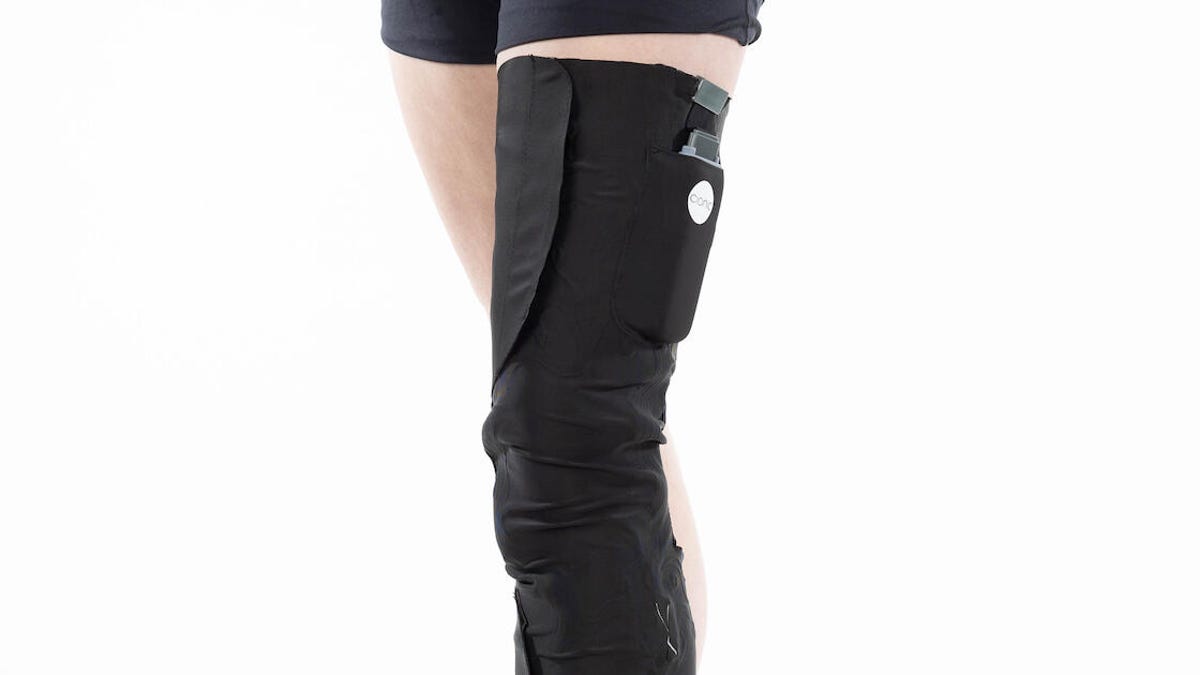This new neural sleeve helps people walk
A new mobility sleeve under development and out of stealth promises a compelling solution for those suffering a variety of mobility issues. Combining two critical signal technologies to both monitor and stimulate the neuromuscular system, the sleeve is on the cutting edge of lightweight next-gen mobility devices.
A Silicon Valley serial entrepreneur invented the technology following his daughter’s cerebral palsy diagnosis. Jeremiah Robison, an alum of companies like Apple and Jawbone, was inspired by two of his daughter’s clinical experiences. The first was a complex data capture session at a gait lab using optical and EMG sensors, which recorded precise information about how she walked. About a year later, functional electrical stimulation was introduced as part of her physical therapy. Electrode pads were placed on individual muscle groups, which a therapist stimulated during walking sessions to stimulate and strengthen the muscles.
Robison’s device and the company he formed to develop the technology, CIONIC, sought to combine the gait sensing and functional stimulation elements that heretofore have required clinical oversight. The device is a wearable for people with mobility issues that doesn’t just monitor leg movements but actually helps activate the person’s muscles. This is far more difficult to pull off than it may sound due to the complexity of combining multiple signals. Combining electromyography (EMG) and functional electrical stimulation (FES) into a single sensor array is almost never done as it is difficult to detect the brain/body signaling while also stimulating.
To help pull this off, CIONIC partnered with the Laboratory for Engineering of the Neuromuscular System (LISiN) at The Polytechnic University of Turin. Last week, CIONIC presented the outcomes of a partnership.
“We set out to create a product that combined the diagnostic power of a multi-million dollar gait lab with the therapeutic power of Functional Electrical Stimulation (FES),” according to Robison. “We were confident we could leverage the recent technological advances enabling innovative products like self-driving cars and apply it to the human body to solve an enormous problem: 14% of adults in the US experience mobility impairment, a number expected to balloon to 20% by 2050.”
Also: LED powered AR glasses are the future (here’s why)
The resulting sensor array successfully combines electromyography (EMG) and functional electrical stimulation (FES). LISiN also helped develop a comprehensive risk assessment strategy to ensure that the product was effective and safe, a critical step in bringing the product to market.
Technology convergence is helping accelerate advances in the medical mobility device market. According to a Research and Markets forecast, the Global Smart Mobility Market is expected to grow at a CAGR of around 29.33%, from USD 421.32 Billion in 2020 to USD 3296.71 Billion in 2029. Functional Electrical Stimulation is a key driver of several new mobility technologies.




